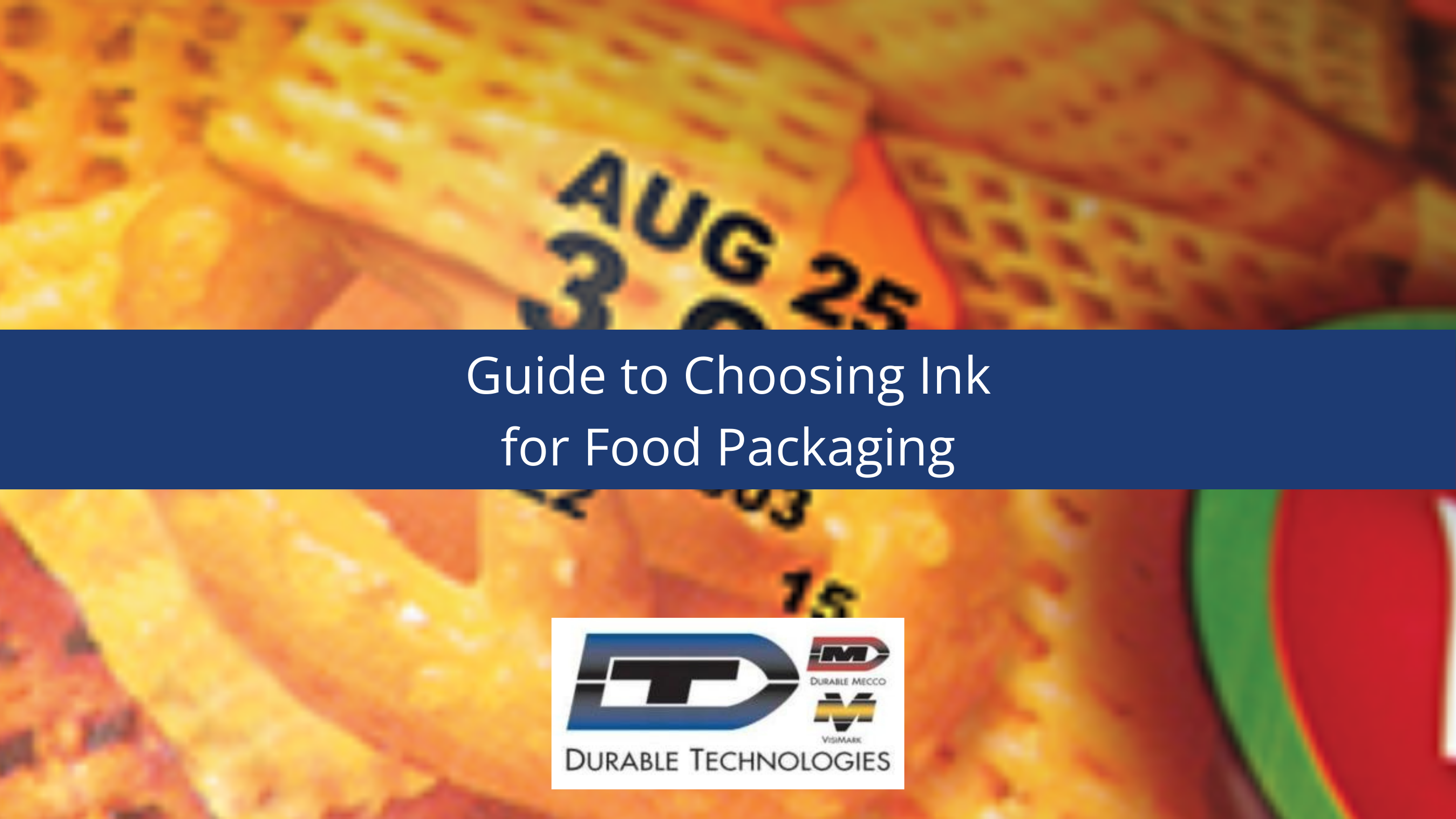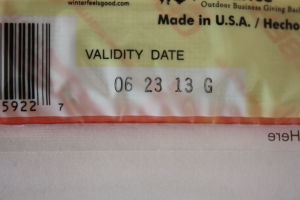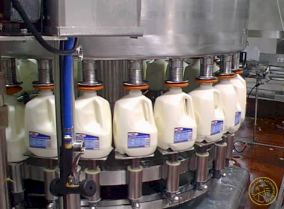
Direct part marking food packaging often requires the marking components to have specific properties. Ink for food packaging needs to meet a few key criteria. To understand what to look for in food packaging marking solutions, we should consider why we mark food packaging and the unique challenges inherent in this type of packaging.
 Why We Mark Food Packaging
Why We Mark Food Packaging
Our grocery store shelves are lined with perishable food products, from cereal boxes to meat products. Many of these products have information that needs to be permanently and clearly marked on their packaging.
The most commonly marked date coding and traceability information on food packaging include barcodes, expiration dates, lot numbers, and batch coding. This information is critical for tracking individual units and batches of products, quality control, and aiding in the sale of the products. Getting this information onto each package is a necessary part of the product's life cycle.
The nature of food packaging itself, however, can present a couple of challenges to direct part marking methods. First, food packaging is often flexible. Think of cereal, for instance. Some cereal is packaged inside a cardboard sleeve, onto which you can mark a barcode and expiration date. Some cereal, however, is packaged inside a plastic bag that serves as its only form of packaging. The bag isn’t ridged or flat like the cardboard, which makes applying a date code somewhat tricky.
Some products will also be exposed to wet environments. Frozen products, for instance, need to retain their barcode markings even if they become slightly damp from temperature changes.
What to Look for in Ink for Food Packaging
 Some of the most commonly employed methods of marking food packaging utilize ink. This is because various ink printing methods (from hand-held printers used in stores to carton and case coders used during production) are the most cost-effective solutions for directly marking food packaging. The versatile properties of ink are another reason ink can be an ideal solution for coding flexible packaging.
Some of the most commonly employed methods of marking food packaging utilize ink. This is because various ink printing methods (from hand-held printers used in stores to carton and case coders used during production) are the most cost-effective solutions for directly marking food packaging. The versatile properties of ink are another reason ink can be an ideal solution for coding flexible packaging.
Ink for food packaging, for instance, can be used on the surfaces food is typically packed inside. Most food products are packaged in plastic, glass, and paper. These surfaces present challenges, like those we discussed above, and ink is one of the least expensive and simple ways of marking them.
Additionally, ink can be used with various marking methods, like rubber stamps and portable inkjet printers, that are easy to adjust. Expiration dates, for example, need to be adjusted continuously, so any marking method used to mark an expiration date needs to be easy to change.
Considering all that, here are the most important things to consider when choosing ink for food packaging.
- What is the substrate (material) being marked?
- What color ink is required?
- What is the required dry time?
- Can the ink be used on porous and non-porous surfaces?
- Does the ink need to be waterproof or resistant?
- How long does the ink impression need to last?
- What is the volume of packages that need to be marked?
- What is your budget?
The Types of Ink That Work Best
We offer a few types of ink suitable for food packaging. Below are the most commonly recommended inks for food packaging.
#1250 All-Purpose Ink for Non-Porous Substrates - Excellent all-purpose, waterproof solvent ink, ideal for use on many porous and non-porous substrates. Superior performance in a
wide variety of automatic coders and hand stamps.
#992/FRZN Ink for Frozen Food Packaging - This ink provides excellent adhesion under the harshest conditions. Particularly, it is suitable for use on poly bags, metal, and waxed paper, and will imprint through layers of moisture. The imprint will remain intact during refrigeration. #992 uses raw materials that meet the USDA requirements for barrier food packaging. Dry time is 30-45 seconds.
#628 Ink for Packaging Films - This pigmented ink adheres exceptionally well to packaging films and plastics, including polyethylene, polypropylene, polyester, PET, foil, and cellophane. Dry time is 10-15 seconds.
Hot Melt Ink Rolls - These ink rolls are available in many sizes and ink formulas to suit your specific application requirements (type of equipment used, substrate, and temperature setting). Black and white are the most common colors and dry time varies depending on the substrate and ink formula chosen.




